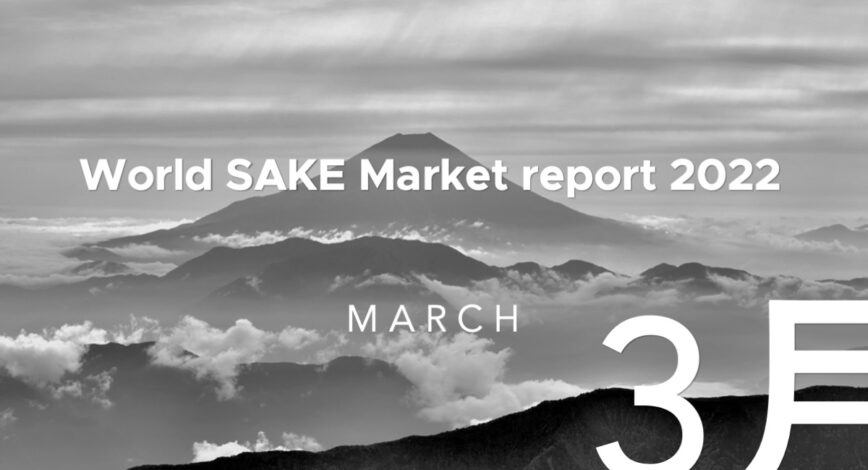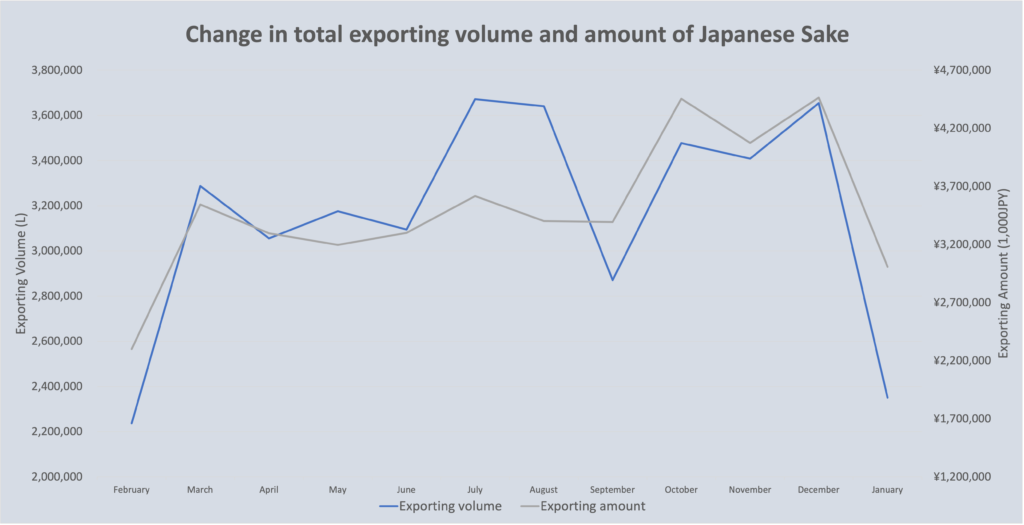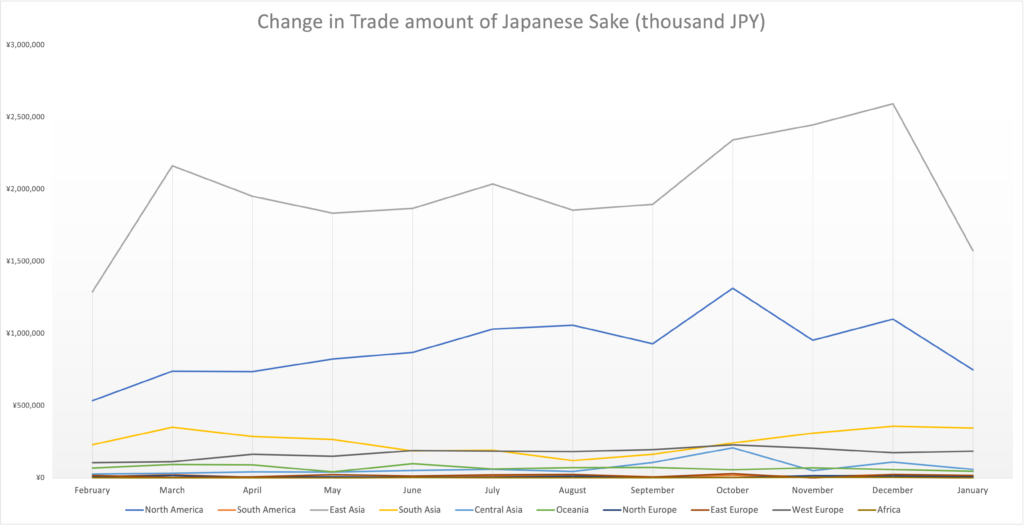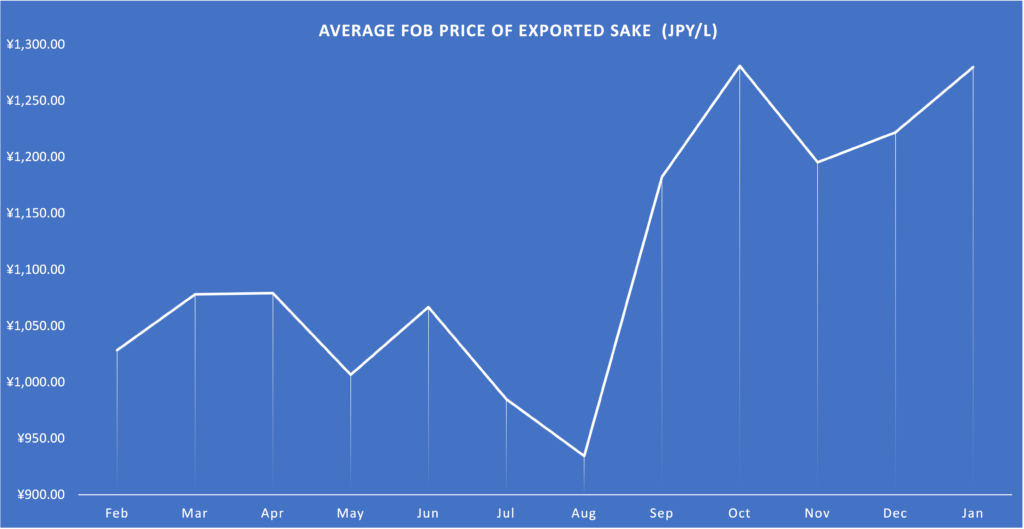
Japanese Sake market report March 2022
Please find the updating market report of the month. As the data is available slightly late, this month ikki will deliver the statistics of January 2022.
To be precise, Sake on the data means exported products from Japan under HS code of 2206.00.
The data you can find is as below;
- Total exported volume and value January 2022
- Exported volume by area January 2022
- Exported amount by area January 2022
- Average FOB price January 2022
- Baltic Exchange Dry Index 2021-2022
- Exchange rate March 2022
Please find the data below.
Contents
Total exported volume and value January 2022

In January 2022, there was a sharp drop in the trade amount and value. The traded amount dropped to 2.35 million liter and the value dropped to 3 billion JPY.
January is always the month Sake trading slowing down. Comparing to the last year, it was increased in both volume and value. From the players there is a voice that Sake market is booming over covid.
Exported volume by area January 2022

Looking at the volume in each area in large scale, as you can see above the volume decreased in all the area. Nevertheless, there should be a bounce back from February, so let’s see how market moves in the next month.
Exported amount by area January 2022

As you can see above, there is a huge fall in East Asia and North America where has large in scale, while relatively steady in South Asia. In North Europe it increased.
The fall in total volume, but it does NOT mean shrink of the market.
Average FOB price January 2022

Surprisingly, average FOB has increased while the total traded value and volume decreased. It would mean there are certain groups of core consumers in some area of the world. Seeds are planted, it is the time to grow.
Baltic Exchange Dry Index 2021-2022
Sadly, the BDI increased on March and it continue to rise now on. Russia and Ukraine issue triggers the rise of logistics again and it takes even more time to solve this logistics cost issue.
Exchange rate March 2022

US is gaining the power agains JPY and it continues now on. Nevertheless, the EUR is relatively stable these days. It is still the time to import.









